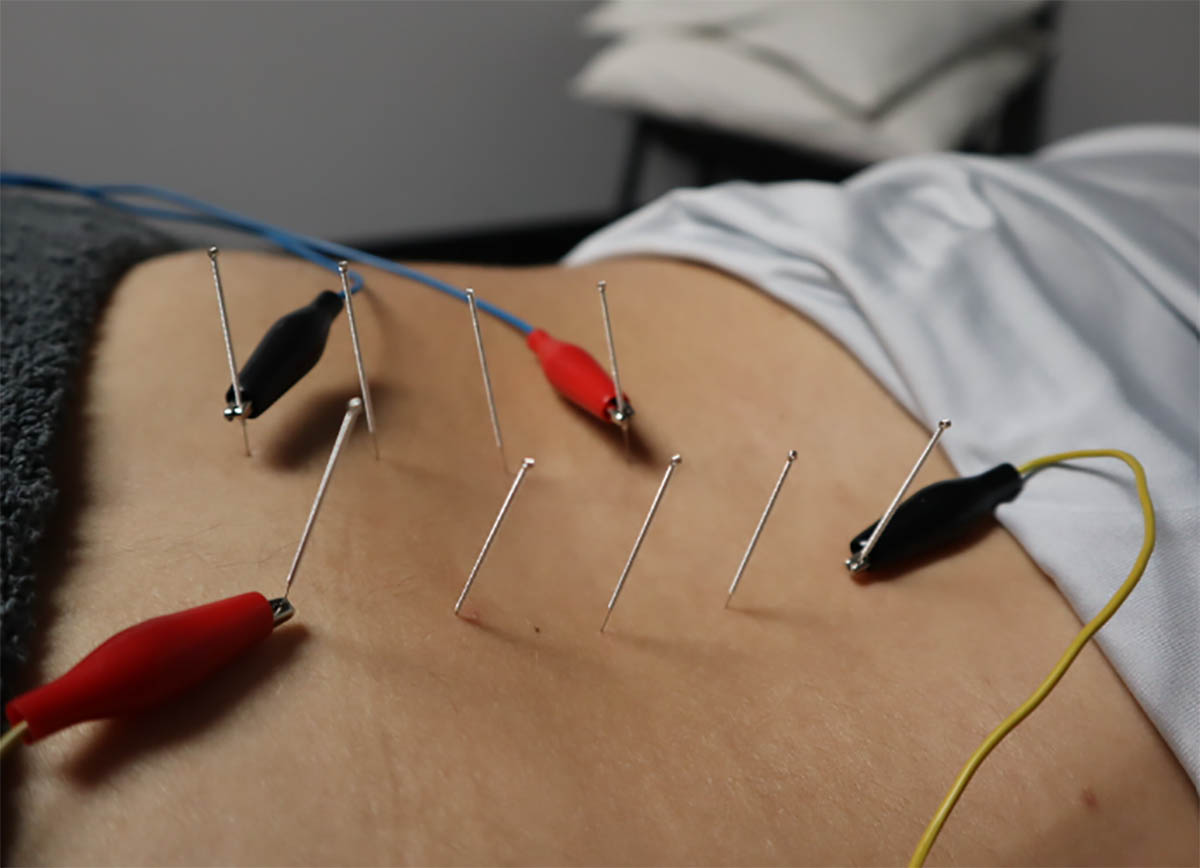
Dry needling? What is that?
Some of you may have heard of dry needling and some of you are entirely unfamiliar as it isn’t a well known practice yet. Dry needling is performed when a small needle, called a monofilament needle, is inserted through the skin superficially or deep into the skin. Most often this space is the muscle, but it can also be close to ligaments, tendons, bursa sacs, & nerves. The needles don’t have injectate, or medicine, that is put into the body. Injecting something into the body is known as wet needling. Dry needling occurs when you place a needle into the skin without injecting medicine.
“Wait, this sounds strangely like acupuncture…”
Well, yes. The technique of dry needling has its roots in acupuncture, although its methodology is very different. Acupuncture is traditionally eastern medicine & is based on the idea of changing and addressing diseases, energy, & qi. Dry needling is not that. Dry needling is western medicine researched & supported. Although dry needling uses similar techniques as acupuncture, the purpose of the technique is to:
- Improve blood flow
- Increase nutrients in the area
- Neutralize the pH of the area
- Allow your body to release & use its own opioid system by releasing endorphins
- Relaxing muscle tension
- Improve nerve conduction velocities
- Improve the neuromuscular connection (connection between a nerve & the muscle)
Dry Needling Techniques
There are different types of dry needling; pistoning & inserting the needle to allow it to sit either deep or superficial to the skin. When physical therapists first started using dry needling, we did more pistoning. This technique was used by finding a trigger point (a very tight, painful band of muscle tissue), inserting the needle, & pulling/pushing the needle in & out of the sore trigger point for 1-2 minutes. Pistoning made patients, traditionally, very sore & painful afterward. Sometimes the pain was so intense they didn’t return to therapy.
In the last few years, most dry needling techniques have shifted to a better, research supported practice that yields better results. By inserting the needle, twisting it, & allowing it to sit for 10-30 minutes research has found this to be more beneficial for pain relief & rehab & less painful for the patient after the session. It can also be coupled with electric stimulation which helps enhance the benefits of the needling session.
Dry Needling: What It Does & What It’s Used For
So how does sticking a needle into the body help muscle, tendon, ligament, joint, & nerve pain? Dry needling causes the release of endorphins & the activation of the immune system response to where the needles are placed. This allows muscles, ligaments, tendons, scar tissue, and nerves that have been in a chronically hypoxic (lack of oxygen), acidic (low pH) & hypernatremic (lack of nutrients) environment to receive increased blood flow which brings increased oxygen, endorphins, & nutrients to the damaged & affected area.
This release of endorphins also neutralizes the acidic pH of the damaged & painful area which allows this process to intensify. The endorphins that are released also encourage the release of your body’s natural opioid system. This helps reduce pain at the affected area. This increase in oxygen, nutrients, endorphins, & opioids also helps break down any scar tissue that may be gumming up the neuromuscular junction (the space between the nerves & muscles that sends motor/muscle activation signals). This allows the area to be desensitized further, decrease the hypersensitivity of the nervous system, & improve the conduction of muscle activation.

Estim with Dry Needling or No?
Estim use is at the discretion of the provider. Estim when done in conjunction with dry needling can increase the benefits to the patient. Some estim facilitates increased blood flow, oxygen, nutrients, the production of your body’s natural opioid system, improve the nerve to muscle connection, & improve collagen production to the area. Some estim inhibits the hypersensitive, painful nerve response to acute, but especially chronic injury & pain.
Who Should Not Receive Dry Needling?
Since dry needling is a minimally invasive treatment, it is not suitable for some populations, including:
- Patients with a history seizures or fainting
- Patients who are currently taking antibiotics for an active infection
- Diabetic patients
- Patients with a phobia or deep fear of needles
- Patients with an allergy to stainless steel
- Patients with pacemakers or defibrillators (if using estim)
Some conditions are discussed with the patient before proceeding. Usually your physical therapist will discuss these with you to weigh the costs & benefits before continuing with a dry needling treatment. These include:
- Pregnancy
- Recent surgery
- Implantation of heart valve or prosthetic
- Osteoporosis or osteopenia
- Patients on blood thinners
- Patients with HIV or Hepatitis
- Patients who have had a surgery to reposition their natural anatomy
Negative Side Effects of Dry Needling
The side effects of dry needling in a patient population that is appropriate for the treatment include:
- Lightheadedness
- Fainting
- Drowsiness
- Soreness as the site where the needles were placed
- Pneumothorax or collapsed lung (this is very rare)
So, Dry Needling Will Fix Me!
No. Dry needling is another tool in the tool box for physical therapists. It is used preliminarily to improve pain & to recover from an injury. But, long term maintenance of flexibility & improvement of strength is what will ultimately prevent pain returning & limiting you. Dry needling is a powerful tool that helps the patients & conditions it’s useful for to recover & rehab faster, but it is not the only thing you’ll need to fully recover.
What Works Well With Dry Needling So I Can Stay Pain Free?
Stretching, strengthening, & lifestyle change. The vast majority of patients that require physical therapy arrive inflexible & weak in their painful region & aren’t addressing lifestyle changes that will ultimately make the biggest difference. Getting better quality & more sleep, eating more vegetables, protein, & complex carbs, exercising regularly, taking time for mindfulness during the day, & surrounding yourself with the people that support you with these lifestyle changes will help you overcome the vast majority of your pain. Once lifestyle changes have been made, this creates an optimal healing environment which allows you to recover faster & respond better to the exercises your PT will give you to address your injury.
Who Can Help You?
Physical therapists are a great resource to receive dry needling & rehab an orthopedic, women’s health, or neurological injury. The physical therapists at Inside Track Physical Therapy & Wellness can help! They’re local, certified in dry needling, & have years of experience working with different patient populations. If you’d like to see the benefits for yourself, sign up for a call with us here on our website.

